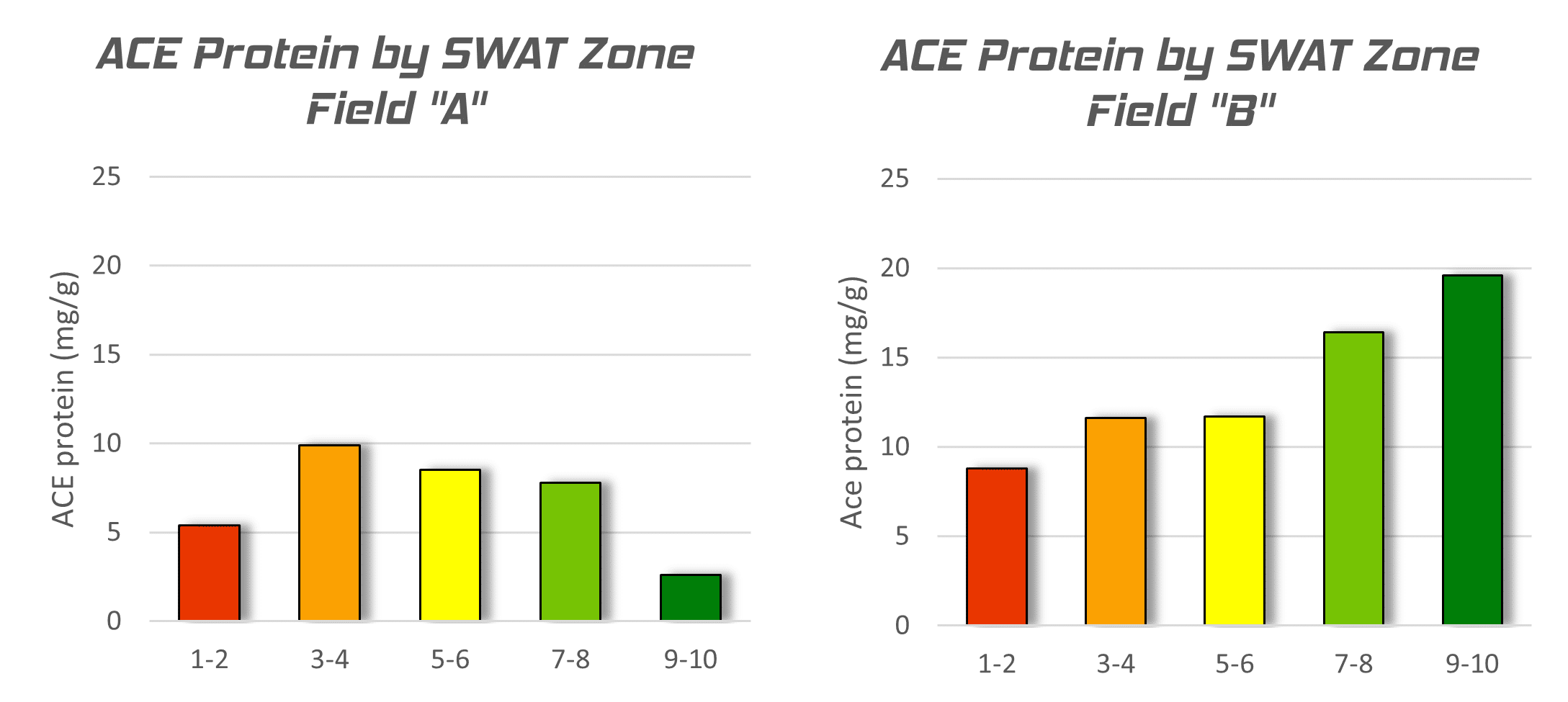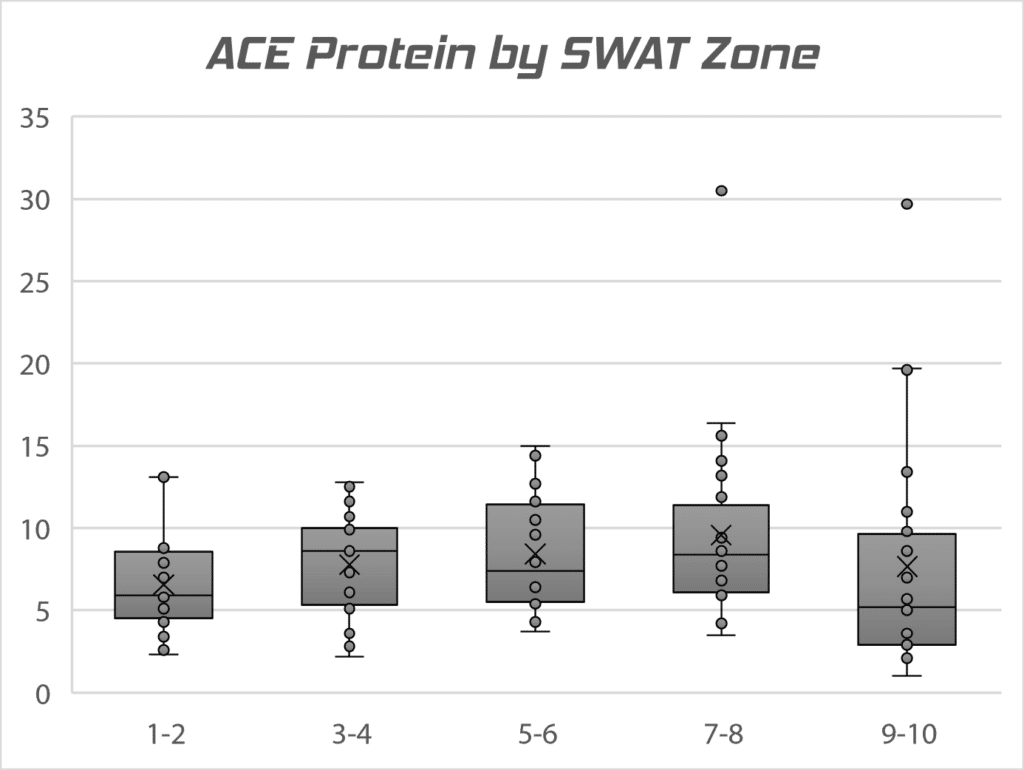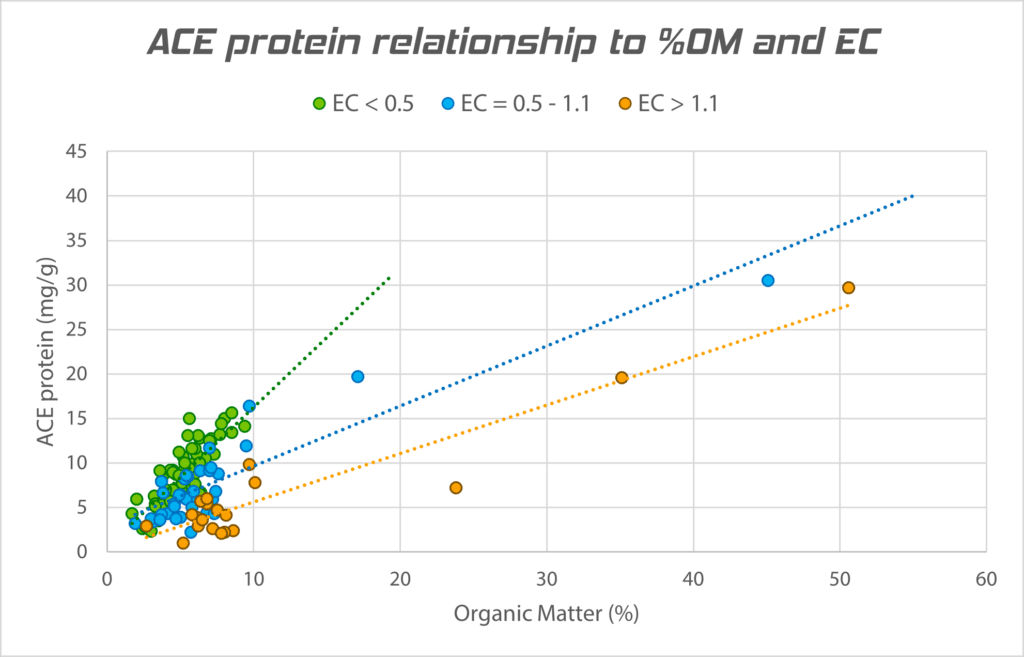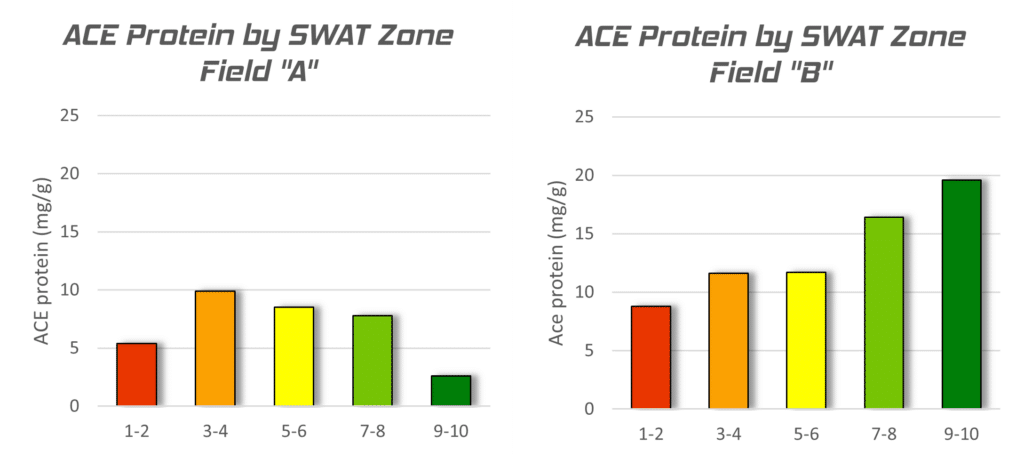Can we measure soil health?

Wes Anderson
VP of Agronomy
wes@swatmaps.com
Before we can answer the question “can we measure soil health?” we must first answer the question “what is a healthy soil?” And that isn’t a straight-forward answer. To those that ask, I would suggest reading Janzen et al. (2022) where a suggested definition is:
“Soil health is the vitality of a soil in sustaining the socio-ecological functions of its enfolding land.”
In other words, it depends. A healthy soil to grow rice may not be considered a healthy soil to grow potatoes or canola, as each crop or plant species prefers different physical or chemical attributes over others.
But for the sake of most broadacre crops that are cultivated in North America or Australia, there are some good guidelines to measure important soil attributes that lend to soil health, productivity, and resiliency in a broad range of weather conditions. The Soil Health Institute (SHI) has outlined three key measurements that are important:
- Soil carbon concentration – related to the more commonly tested “organic matter percent”, organic carbon promotes better soil structure, microbial activity that cycles nutrients, and soil water holding capacity.
- Carbon mineralization potential (CO2 burst) – an indicator of microbial activity that cycles carbon and nutrients.
- Aggregate stability – a measure of soil structure that is important for water infiltration, storage, and ability for plant roots to access water and nutrients.
More robust regional models have also been developed, such as the CASH score (Moebius-Clune et al., 2016) and SASH score (Wu and Congreves, 2021) that confirm the importance of the tests outlined by the SHI, as well as some others such as standard nutrient extractions and ACE Protein (autoclave-citrate-extractable protein). More recently, Zhang et al. (2024) found similar indicators in a robust study utilizing long-term crop rotation experiments at the Breton Farm in Alberta, Canada. This study also identified ACE Protein as a key indicator of soil health. Furthermore, in Michigan, USA, Naasko et al. (2024) found ACE Protein to be a useful indicator of soil health with a strong link to yield. So, what is ACE protein and why is it such a common indicator of soil health?
ACE protein can be thought of as a measure of soil organic nitrogen that is readily mineralizable. It’s part of the dead organisms in the soil that are decomposing and ready to supply nutrients to a growing crop – which is what we typically want functional, healthy soil to do during the growing season.
Unfortunately, the ACE protein test is currently quite expensive, although there is some work being done at University of Saskatchewan (Wu et al., 2023) to make it more scalable and affordable for commercial labs to routinely test. Regardless, at Croptimistic we dedicate resources every season to better understand emerging technologies that can enhance the value of SWAT MAPS and our knowledge of soil function across the landscape. Through testing of five management zones in 24 different fields, we have also found ACE protein to consistently represent much of what we know about soils in different SWAT zones and in different fields.
Our first interest was general trends by SWAT zone. What we found was a fairly consistent trend of increasing ACE protein values from zone 1 to zone 8, often mirroring organic matter (OM) levels and long-term productivity related to water and nutrient availability. Samples from zones 9-10 had a high degree of variance though (Figure 1), related to both OM and soil test electrical conductivity values (EC; measure of salts).

Further analysis of the data showed interesting trends associated with both OM and EC, where high EC soils affected by salts had low ACE protein levels relative to the OM level (Figure 2). This would indicate that despite having high OM, salinity will reduce the ACE protein level compared to a non-saline soil. There was even a tendency for very well-drained, low EC soils (< 0.5) having relatively high ACE protein levels compared to other non-saline soils with slightly higher EC.

On a management zone level, where management decisions take place using SWAT, these broader trends were confirmed. For example, Field “A” had some poorly drained soils and increasing salinity in zones 7-10, while Field “B” had increasing OM from zones 1-10 with zone 10 being a very high OM peat soil type. These peat soils are known to have exceptional capacity for nitrogen and sulfur mineralization in-season, provided the soil has plant-available water to maintain microbial activity.

What we found:
- While the ACE Protein test is only one indicator of soil health, it did prove to be more valuable than other tests we’ve tried, as it was sensitive to multiple soil properties like OM and salinity, as well as some crop history (data not shown).
- ACE Protein adds another layer of depth to mineralization estimates beyond just OM, the current industry standard.
- There were clear and logical differences between SWAT zones, indicating measurable soil health does significantly vary across most landscapes.
So what?
It appears some additional tests such as ACE protein can give us a better indication of soil function that could lead to better fertilizer recommendations, such as where nitrogen rates could be reduced without affecting yield potential. While it’s not a test that needs to be done every year as it is relatively expensive and should only be used with purpose, the ACE protein test is more sensitive to management changes than organic matter tests, and as a result could be used to measure the differences in soil due to changes in tillage or crop rotation, for example (Sainju, et al., 2022; Naasko et al., 2023).
The results also highlight the importance of proper soil drainage and understanding the limiting factor for yield. If parts of the field are poorly drained and salinity becomes a problem, it effectively trumps everything else. It won’t matter how high the OM is, or that there are ample nutrients available. The salts will affect plant-available water and limit biological function. This is why each test we can perform on a soil must be considered holistically with other tests, in the context of the environment it is in, and for the function the soil is supporting (such as crop species).
Soil health is a large, ambiguous topic. While it is not easily defined, not to mention measured, there are some emerging laboratory tests that show promise in adding additional information to what we already have with SWAT MAPS and regular soil lab tests. The combination of this type of data along with standard nutrient extractions and pH can help guide the accuracy of variable rate applications of nutrients even further, benefiting farm economics and the environment.
References:
Janzen, H. H., Janzen, D. W., & Gregorich, E. G. (2021). The ‘soil health’ metaphor: illuminating or illusory? Soil Biology and Biochemistry, 159, 108167.
Moebius-Clune, B.N., D.J. Moebius-Clune, B.K. Gugino, O.J. Idowu, R.R. Schindelbeck, A.J. Ristow, H.M. van Es, J.E. Thies, H.A. Shayler, M.B. McBride, K.S.M Kurtz, D.W. Wolfe, and G.S. Abawi. (2016). Comprehensive Assessment of Soil Health – The Cornell Framework, Edition 3.2, Cornell University, Geneva, NY.
Naasko, K., Martin, T., Mammana, C., Murray, J., Mann, M., & Sprunger, C. (2024). Soil protein: A key indicator of soil health and nitrogen management. Soil Science Society of America Journal, 88(1), 89-108.
Sainju, U. M., Liptzin, D., & Stevens, W. B. (2022). Autoclaved citrate-extractable protein as a soil health indicator relates to soil properties and crop production. Nutrient Cycling in Agroecosystems, 124(3), 315-333.
Qianyi Wu, Kate A. Congreves, and Richard E. Farrell. (2023). Microwave-assisted citrate extraction (MaCE) as an alternative to autoclave citrate extraction (ACE) of a soil protein fraction. Canadian Journal of Soil Science. 103(4): 684-688.
Wu, Q., & Congreves, K. A. (2021). A soil health scoring framework for arable cropping systems in Saskatchewan, Canada. Canadian Journal of Soil Science, 102(2), 341-358.
Zhang, J., Dyck, M., Quideau, S. A., & Norris, C. E. (2024). Assessment of soil health and identification of key soil health indicators for five long-term crop rotations with varying fertility management. Geoderma, 443, 116836.









